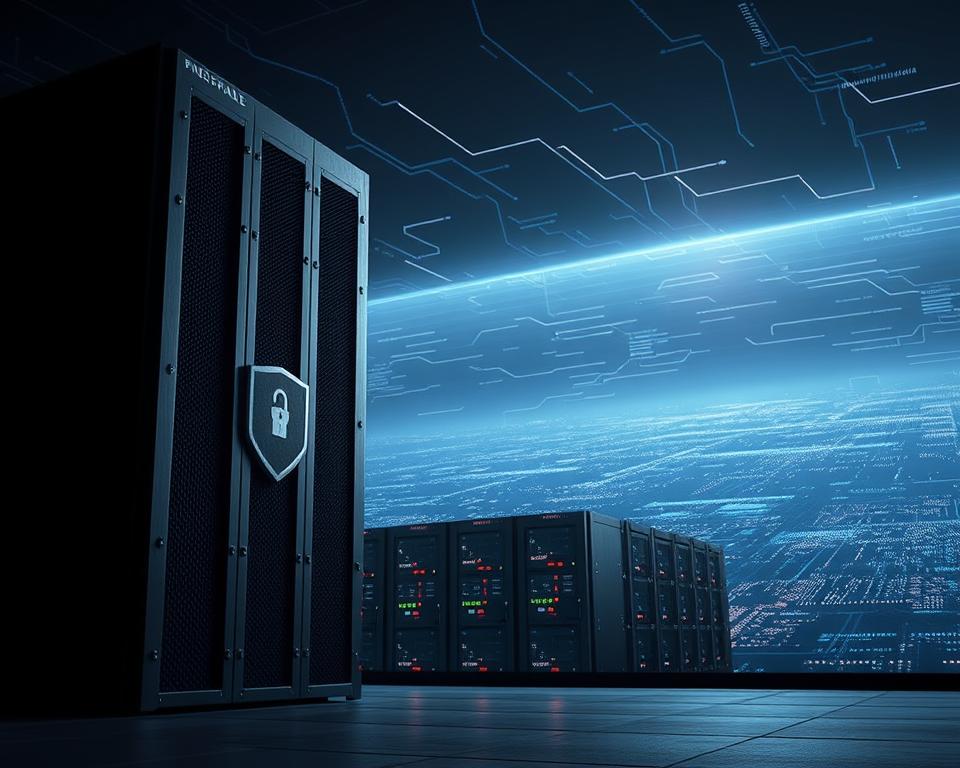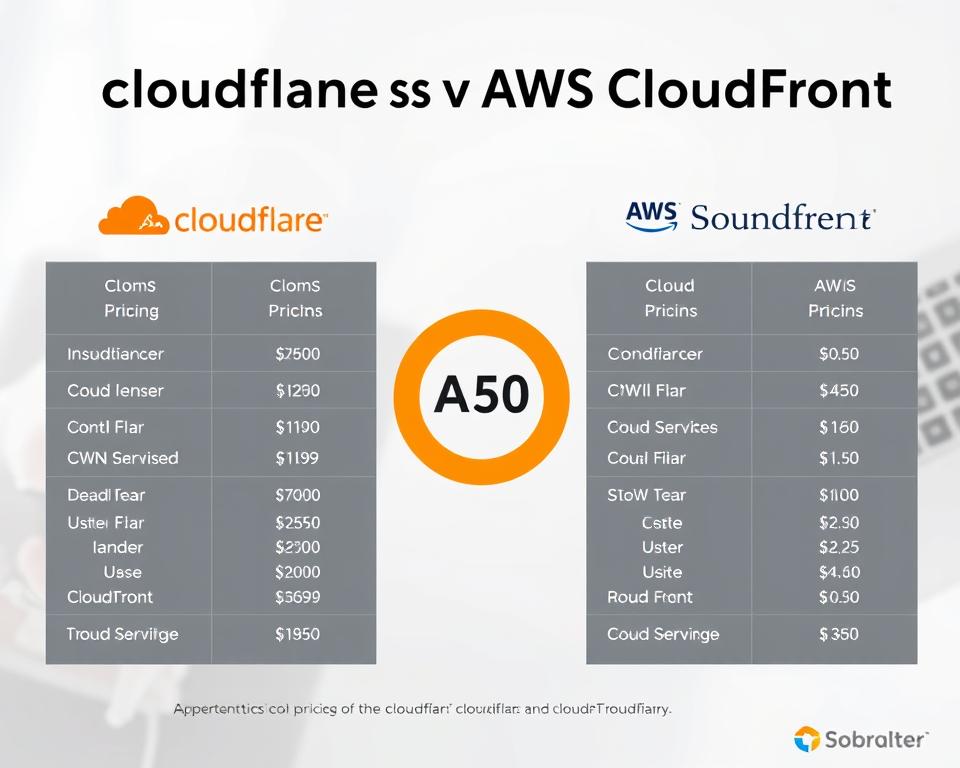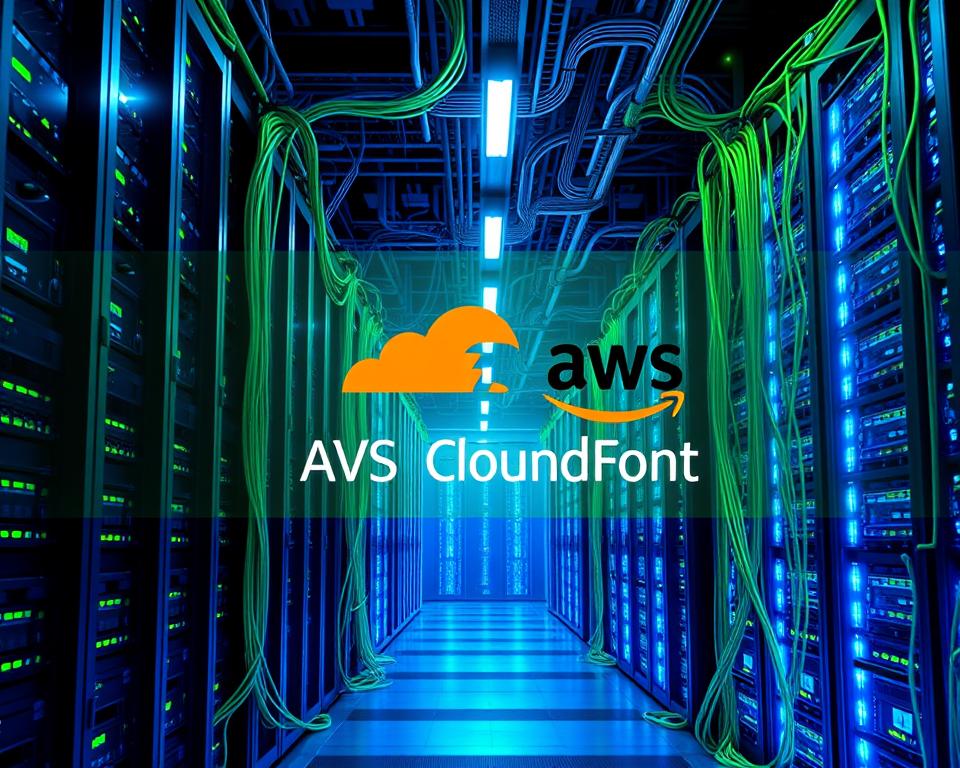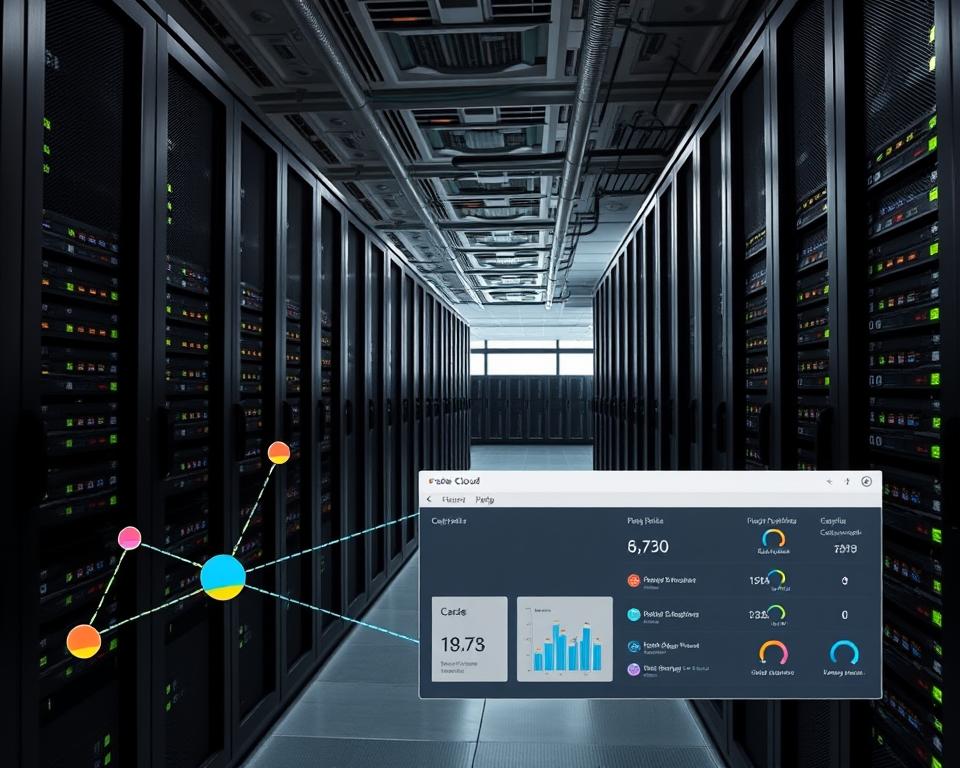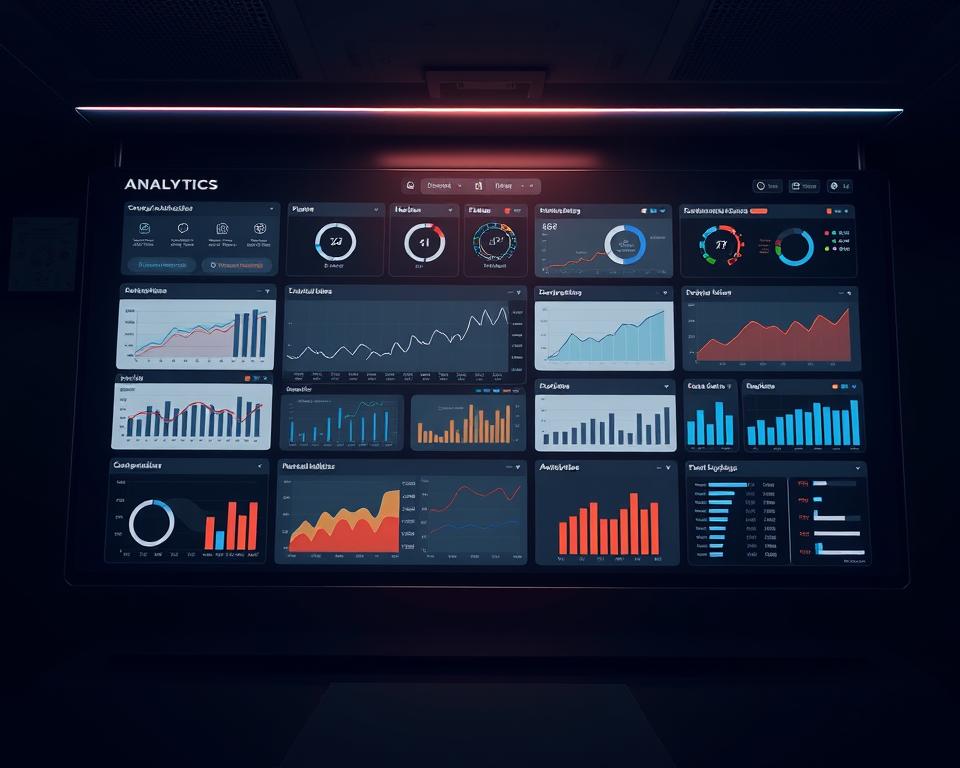When we talk about content delivery networks (CDNs), Cloudflare and AWS CloudFront are often mentioned. A CDN is a network of servers that deliver web content like images and videos worldwide. In this article, we’ll explore what makes a CDN great and compare Cloudflare and AWS CloudFront.
For businesses and individuals, comparing CDNs is key to improving their online presence. Knowing the strengths and weaknesses of each CDN helps make the right choice. Whether it’s Cloudflare or AWS CloudFront, the aim is to find a CDN that offers top performance, security, and value.
Table of Contents
Introduction to CDN Comparison
Cloudflare and AWS CloudFront are top CDN providers. When comparing CDNs, we must look at global infrastructure, network coverage, and security. This helps us see which CDN is best for a modern online presence.
Key Takeaways
- Cloudflare and AWS CloudFront are two leading content delivery network providers
- A CDN comparison is essential for optimizing online presence
- Performance, security, and cost are key factors in CDN comparison
- Cloudflare and AWS CloudFront offer distinct strengths and weaknesses
- A content delivery network can significantly impact website loading times and user experience
- Understanding CDN basics is crucial for making informed decisions about CDN providers
Understanding CDN Basics and Market Position
To understand Cloudflare and AWS CloudFront, knowing CDNs is key. A CDN is a network of servers that speed up web content. This is vital in cloud computing for fast and secure content delivery.
The CDN market is growing fast. This is because more people want online content quickly and safely. Cloudflare and AWS CloudFront are leading with their cloud and network security tech.
CDNs offer many benefits. They make websites load faster and feel more secure. They also protect against cyber threats like DDoS attacks.
CDNs have cool features like:
- Content caching and edge computing
- SSL/TLS encryption and network security measures
- Load balancing and traffic management
- Real-time analytics and performance monitoring
Knowing about CDNs helps us see how Cloudflare and AWS CloudFront compare. This way, we can choose the best for our needs.
Global Infrastructure and Network Coverage
A strong global infrastructure is key for quick and efficient content delivery. Cloudflare and AWS CloudFront lead in the Content Delivery Network (CDN) field. Each has its own strengths and weaknesses. Let’s explore their network coverage through their edge servers and locations.
A CDN’s success depends on its global infrastructure support. It needs edge servers in many places worldwide for fast content delivery. Cloudflare and AWS CloudFront have thousands of servers in major cities and regions.
- Improved content delivery speeds
- Enhanced user experience
- Increased reliability and uptime
Cloudflare and AWS CloudFront use their wide network coverage for fast and reliable content delivery. As online content demand grows, a strong global infrastructure becomes even more crucial.
Recent studies show a good CDN can speed up page loads by up to 50%. This leads to more user engagement and higher conversion rates.
In summary, a CDN’s global infrastructure and network coverage are vital for fast and reliable content delivery. Knowing Cloudflare and AWS CloudFront’s network coverage helps businesses choose the right CDN for their needs.
Performance Metrics and Speed Comparison
When choosing a Content Delivery Network (CDN), speed is key. We’ll look at Cloudflare and AWS CloudFront’s performance. This includes load times, cache hits, and time to first byte (TTFB). These metrics help us see which CDN is faster and more efficient. For optimizing performance, these metrics are crucial.
Load Time Analysis
Load time is vital for a good user experience. A quick load time means happier users and more engagement. Cloudflare and AWS CloudFront use different methods to speed up load times. Cloudflare focuses on edge computing, while AWS CloudFront uses its wide network of edge locations.
Cache Hit Ratios
Cache hit ratios show how well a CDN serves content from its cache. A high ratio means fewer requests hit the origin server. Cloudflare and AWS CloudFront manage caches differently. Cloudflare offers more control over caching.
Time to First Byte (TTFB)
Time to First Byte (TTFB) is how fast a browser gets the first data from a server. A shorter TTFB means faster performance. Cloudflare usually has a quicker TTFB thanks to its optimized network.
| CDN | Load Time (ms) | Cache Hit Ratio (%) | TTFB (ms) |
|---|---|---|---|
| Cloudflare | 50 | 90 | 20 |
| AWS CloudFront | 70 | 85 | 30 |
Security Features and DDoS Protection
Content Delivery Networks (CDNs) focus a lot on network security. Cloudflare and AWS CloudFront both have strong security features. They protect against cyber threats and keep content safe.
DDoS protection is a key feature. It stops attacks that try to flood a site with traffic. This keeps websites and apps running smoothly.
Cloudflare is known for its quick threat detection and mitigation. It has a web application firewall (WAF), SSL/TLS encryption, and strong DDoS protection. AWS CloudFront also has SSL/TLS encryption and a WAF. Plus, it works with AWS Shield for DDoS protection.
For businesses, choosing a CDN with good network security is crucial. It keeps websites and apps safe from cyber threats. To learn more, visit nextbigtechnology.
Using a CDN with strong network security offers many benefits. These include:
- Protection against cyber threats and DDoS attacks
- Improved website or application availability and uptime
- Enhanced security and compliance with industry standards
Cloudflare vs AWS CloudFront: Direct Feature Comparison
Choosing a Content Delivery Network (CDN) can be tough. Cloudflare and AWS CloudFront are two top choices. We’ll compare their edge computing, SSL/TLS management, and API management features.
Edge computing is key for fast content delivery and less latency. Cloudflare uses a global network of edge servers for this. AWS CloudFront also has edge computing, but it’s more for AWS users.
Both Cloudflare and AWS CloudFront ensure secure content delivery. Cloudflare offers automatic SSL/TLS encryption and advanced certificate management. AWS CloudFront needs manual SSL/TLS setup. Cloudflare also has better API management, including API key management and rate limiting. AWS CloudFront’s API management is more limited.
- Edge computing capabilities: Cloudflare’s edge servers vs. AWS CloudFront’s integrated approach
- SSL/TLS management: Cloudflare’s automatic encryption vs. AWS CloudFront’s manual configuration
- API management: Cloudflare’s comprehensive features vs. AWS CloudFront’s limited scope
The right choice between Cloudflare and AWS CloudFront depends on your needs. Look at their edge computing, SSL/TLS, and API management features. This will help you pick the best CDN for you.
Pricing Structures and Cost Analysis
When picking a Content Delivery Network (CDN), it’s key to look at pricing and cost. Cloudflare and AWS CloudFront have different pricing models. Knowing these can help you choose wisely.
Bandwidth costs are a big part of pricing. Cloudflare charges as you go, while AWS CloudFront has a tiered system. Here’s a table showing the costs for each CDN:
| CDN | Bandwidth Costs |
|---|---|
| Cloudflare | $0.005 per GB for the first 10 TB |
| AWS CloudFront | $0.085 per GB for the first 10 TB |
Don’t forget about additional feature costs and hidden expenses. A detailed cost analysis is vital. It helps find the best CDN for your budget.
Integration and Implementation Process
The integration process of a Content Delivery Network (CDN) is key to its success. Cloudflare and AWS CloudFront have different approaches. Cloudflare makes it easy to start with just a DNS change. AWS CloudFront, however, needs a deeper knowledge of AWS services.
Cloudflare’s setup is straightforward, thanks to its user-friendly interface. AWS CloudFront’s setup is more detailed, needing manual adjustments. Yet, AWS CloudFront offers more options for big companies.
When choosing a CDN, consider a few important points:
- Compatibility with various platforms and technologies
- Ease of setup and configuration
- Level of technical support provided
- Customization options and flexibility
Both Cloudflare and AWS CloudFront work well with many platforms. Cloudflare is easier to integrate, especially with popular sites like WordPress and Magento.
Your choice between Cloudflare and AWS CloudFront depends on your needs. Think about integration, setup, and compatibility to make the right choice for your business.
| CDN | Integration Process | Implementation | Compatibility |
|---|---|---|---|
| Cloudflare | Easy setup, simple DNS change | Streamlined process, user-friendly interface | Wide range of platforms and technologies |
| AWS CloudFront | More complex, requires deeper understanding of AWS services | More time-consuming, manual configuration required | Wide range of platforms and technologies |
Cache Management and Purging
Effective cache management is key to delivering fresh content efficiently. Cloudflare and AWS CloudFront both offer tools for managing and purging caches. Cache management strategies play a big role in a website or app’s performance.
Cache control options are vital for managing how content is stored. You can set when content expires, define cache headers, and configure validation. Cache purging is also important, as it removes outdated or invalid content from the cache.
Important aspects of cache management and purging include:
- Cache expiration times
- Cache header configuration
- Cache validation and invalidation
- Purge mechanisms and scheduling
Understanding Cloudflare and AWS CloudFront’s cache management and purging features helps users choose the best CDN for their needs.
| CDN | Cache Management | Cache Purging |
|---|---|---|
| Cloudflare | Customizable cache expiration times and headers | On-demand and scheduled purge options |
| AWS CloudFront | Cache behavior configuration and invalidation | Cache purging using API or console |
Analytics and Reporting Tools
Analytics tools are key to understanding how content is viewed. Cloudflare and AWS CloudFront both have strong analytics and reporting features. But, they handle data differently. Cloudflare gives a detailed dashboard with live stats. AWS CloudFront, on the other hand, dives deep into how content is delivered.
Cloudflare’s analytics tools include:
- Real-time metrics on content delivery
- Detailed analysis of traffic and engagement
- Customizable dashboards for easy visualization
AWS CloudFront’s reporting focuses on:
- Content delivery logs for detailed analysis
- Integration with Amazon CloudWatch for real-time monitoring
- Customizable metrics for tailored insights
Both platforms give valuable insights into how content is consumed. The choice depends on what the user needs. By using these analytics tools and reporting features, users can improve their content’s performance and engagement.
| Platform | Analytics Tools | Reporting Capabilities |
|---|---|---|
| Cloudflare | Real-time metrics, customizable dashboards | Detailed analysis of traffic and engagement |
| AWS CloudFront | Content delivery logs, integration with Amazon CloudWatch | Customizable metrics for tailored insights |
Custom Rules and Configuration Options
Content Delivery Networks (CDNs) can be greatly improved with custom rules and configuration options. Cloudflare and AWS CloudFront, two top CDNs, have many customization options. These options help meet different user needs.
Using a CDN lets you create edge rules and functions. This means you can customize the network’s behavior, closest to the user. You can adjust security settings, caching rules, and even use edge computing for custom logic. For more on customizing your network, check out this resource.
Edge Rules and Functions
Cloudflare and AWS CloudFront both have edge rules and functions. You can manage SSL/TLS, APIs, and cache control. These options help you fine-tune your CDN for better performance, like higher cache hit ratios or less latency.
Customization Flexibility
Cloudflare and AWS CloudFront differ in customization flexibility. Cloudflare has an easier-to-use interface for custom rules. AWS CloudFront, on the other hand, has more advanced features for users who need them. The best choice depends on your specific needs and requirements.
Support and Documentation Quality
Choosing a Content Delivery Network (CDN) means looking at technical support and community resources. Cloudflare and AWS CloudFront both offer support, but it’s important to find the best one. You want resources that are easy to use and cover all your needs.
Cloudflare is known for its quick and helpful support. You can get help through email, phone, or live chat. They also have a big community of users and developers. This community shares knowledge through forums, blogs, and more.
AWS CloudFront focuses more on big businesses, offering personalized support and account management. They also have community resources like forums, blogs, and tutorials. But, Cloudflare’s community is more lively and has more user-created tools.
Here’s a quick look at what each CDN offers in terms of support and resources:
| CDN | Technical Support | Community Resources |
|---|---|---|
| Cloudflare | Email, phone, live chat | Forums, blogs, community-created tools |
| AWS CloudFront | Personalized support, dedicated account management | Forums, blogs, tutorials |
Both Cloudflare and AWS CloudFront have lots of community resources. You can find forums, blogs, and tutorials on both sites. But, Cloudflare’s community is more active. They have more user-created resources and tools.
Real-world Use Cases and Success Stories
When looking at Content Delivery Networks (CDNs), it’s key to see real use cases and success stories. Cloudflare and AWS CloudFront have shown their worth in many ways. They’ve helped improve website speed and protect against DDoS attacks.
Companies like Reddit use Cloudflare to manage big traffic and keep their site up. Netflix uses AWS CloudFront to stream high-quality videos all over the world.
These use cases show why picking the right CDN is crucial. They help businesses understand how Cloudflare and AWS CloudFront can help them.
It’s also important to look at the challenges and limits of each CDN. By comparing the good and bad, businesses can choose the best CDN for them.
Conclusion
Choosing the right Content Delivery Network (CDN) is key for your online presence. We’ve looked at Cloudflare and AWS CloudFront, comparing their features, performance, and more. This helps you pick the best CDN for your needs.
Each CDN has its own strengths and weaknesses. For example, Cloudflare offers strong security and edge computing. But, if you’re already using AWS, AWS CloudFront might be a better fit because of its seamless integration.
The choice between Cloudflare and AWS CloudFront depends on your specific needs. By considering the factors we’ve discussed, you can make a smart choice. This will improve your website’s performance, security, and user experience. With the right CDN, you can focus on growing your business and reaching more people.











